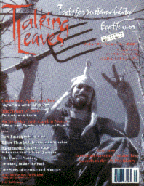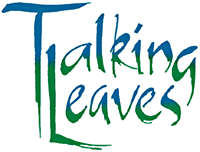

Sales of the FIC's 456-page Directory have been swift, and the book's extensive maps, charts, community descriptions, and articles have guided many community-seekers and attracted the attention of major print and broadcast media. Nevertheless, ACIC insists, the Directory is not enough.
This Spring sees the release of Intentional Communities Guide 2001. At 1200 pages, it lends itself less easily to packing on a bicycle tour. However, say its creators, it is worth every ounce of its hefty eleven-pound bulk.
"With all due respect," Guide editor Dirk Grasshopper Jones of Wayward Canyon Educational Center explained in a recent interview, "the Directory was a tremendous effort. Yet I discovered, as I perused it, that some of the most vital information I'd want when looking for a community was nowhere to be found."
What makes the new Guide different? "We surveyed every community about the truly essential issues in community life, as we saw them. Our cross-reference charts alone take up over 500 pages, because we wanted to include the information that really matters most in choosing a community home."
The charts reveal the "inside scoop" on a number of community phenomena, including:
* Ogres: number of "ogres" who reside at the community
* Ogre factor: number of ogres expressed as percentage of community population
* Ogre financial investment: percentage financial stake those ogres hold in the community as a whole, and/or percentage of the community's outstanding debts owed to those ogres
* Ogre/founder index: percentage of ogres who are also original founders of the community
* Dog discussion share: percentage of community meeting time in which discussions, debates, or conflicts involving dogs are the meeting's primary focus
* Cat/non-livestock-pet discussion share: a similar measurement, this time for the percentage of community meeting time dedicated to issues surrounding cats and other pets (excluding dogs and livestock)
* Livestock discussion share: a broad category, covering percentage of community meeting time dedicated to chickens, ducks, goats, sheep, cows, and other animals kept or potentially kept by the community for their utility and/or as "farm" pets
* Diet discussion share: percentage meeting time dedicated to discussions, debates, or conflicts related to choice of food and food buying policies
* Kitchen sanitation discussion share: percentage meeting time in which kitchen sanitation is the primary focus
* Kitchen cleanliness factor: the average percentage of kitchen surfaces that are clean at any one time, added to the average percentage of community pots, pans, and cooking/serving utensils that are clean at any one time, then divided in two
* Dish cleanliness factor: the average percentage of the community's eating utensils --plates, bowls, glasses, mugs, spoons, forks, knives, and chopsticks--that are clean at any one time
* Days-to-compost: the average number of days compostable kitchen scraps sit in plastic containers in the kitchen or dining hall before being taken away
* Children discussion share: percentage of community meeting time devoted to discussions, debates, or conflicts concerning appropriate numbers, roles, and guidelines for children and for adults engaged in child-rearing--broken down into subsets (each listed separately in the Guide) including:
* Sugar and junk food issues* Computers per resident: the total number of personal and community computers divided by the total number of human residents
* Toy weapons issues
* Television/mass media exposure issues
* Educational and child/parent counseling philosophies
* Pokemon
The charts also feature check-marks indicating "yes: in-house," "yes: out-of-house," and "no" as answers to the question, "Does this community have access to a...?" in the following categories:
* Photocopier
* Fax machine
* Electrician
* Car mechanic
* Plumber
* Dentist
* Chiropractor
* Massage Therapist
* Lawyer
* Mediator
* Tae Kwon Do Instructor
* Karaoke Bar
* Cash Machine
* Stand-Up Comedian
* Stereo
* Newspaper
Sixty-five pages of maps, showing the location of every community listed, are specially-designed to be useful to a broad range of community-seekers. Suggested hitchhiking routes, "best RV routes," and public and private airports and helicopter-landing pads are all shown. Community descriptions for each group supplement the cross-reference charts by providing even more detailed information, including a week's worth of typical breakfast, lunch, and dinner menus.
More than five dozen articles concern individuals' experiences of searching for and living in intentional community, advice for current and prospective communitarians, and broader issues within the movement. Titles include "Finding a Community Toaster that Toasts but Doesn't Burn," "This Doesn't Seem Like Kansas Anymore," "Securing Your Private Coffee Stash," "The Energy-Conserver's Dilemma: What to Do when Someone Else's Lights Are On but Nobody's Home," "My Family Lives in Another Conceptual Galaxy, but I'm OK with It," "Dealing with the Peanut Gallery: Tips for Song-Leaders," "Scapegoats and Sheep: Power Struggles and Interpersonal Dynamics in the Turn-of-the-Millennium Community," "Relaying Phone Messages: Tales of Triumph and Disaster," and "Listening to NPR: Stepping toward a More Peaceful, Just World, Stumbling into Co-optation, or Staggering into Cynicism?--A Community Discussion."
A special section on "Detentional Communities," written by ACIC's paroled ex-treasurer Russ Reina, features his tips for "finding, living off of, and fleeing" community, complete with over 800 listings and escape routes. Editor Grasshopper Jones also contributes an autobiographical sketch detailing his personal evolution in relation to his dog, his family, his community, and the world, as well as an explanation of why the Guide seemed like such an essential project to him, despite the existence of the FIC's Directory.
The ACIC's Intentional Communities Guide 2001 is available for $89.95 plus $17.95 shipping directly from the Associated Confederation of Intentional Communities, c/o Dirk Grasshopper Jones, Wayward Canyon Educational Center, 888 Wayward Canyon Lane, Ambush, OR 97999 (checks payable to Russ Reina).
If you have any money left over and want to compare, you can still order Communities Directory 2000 for $34 postpaid from FIC, 138 Twin Oaks Rd., Louisa, VA 23093, order at ic dot org, 1-800-462-8240.
Water Wordsworth's abiding fascination with community gives him succor after arguments with his partner, Annette Pecker.
�2001* Talking Leaves
Spring/Summer 2001
Volume 11, Number 1
Tools for Sustainability/Eco-Humor
We welcome your letters!
For a sample copy of the Spring/Summer 2001 issue, "Tools for Sustainability/Eco-Humor," send $6 to
